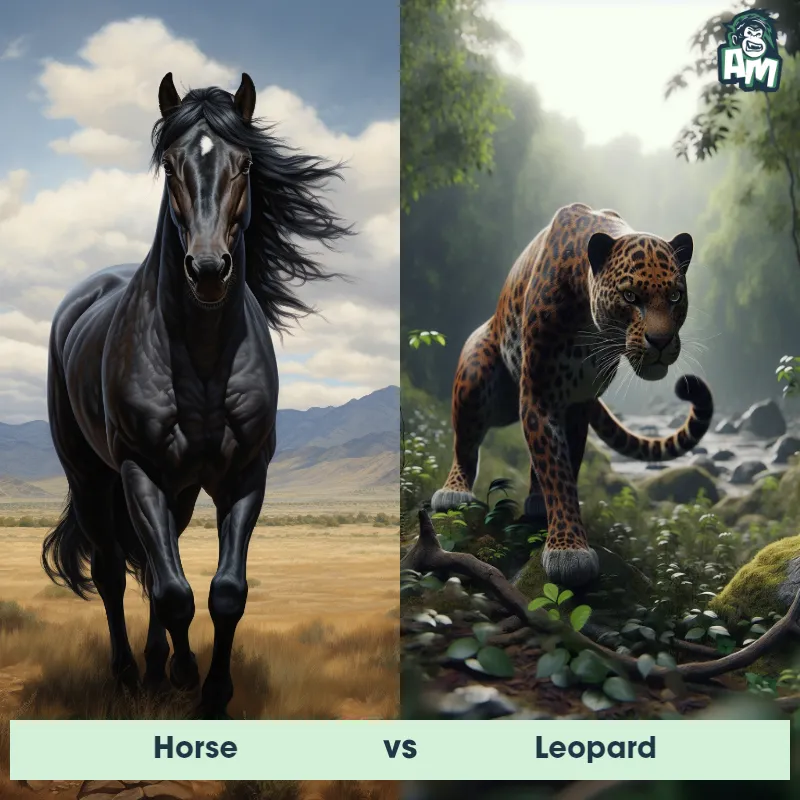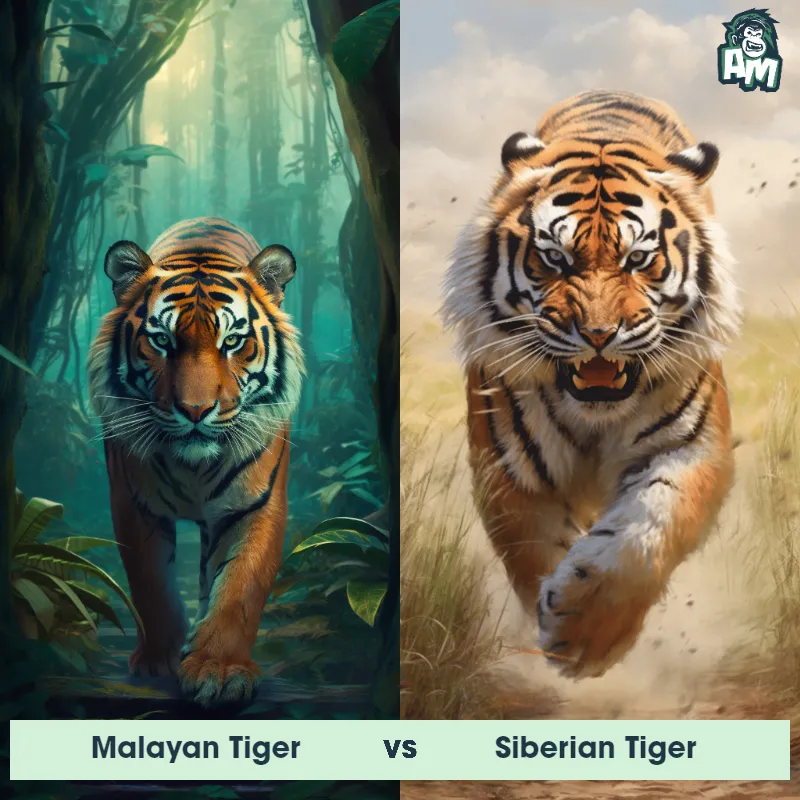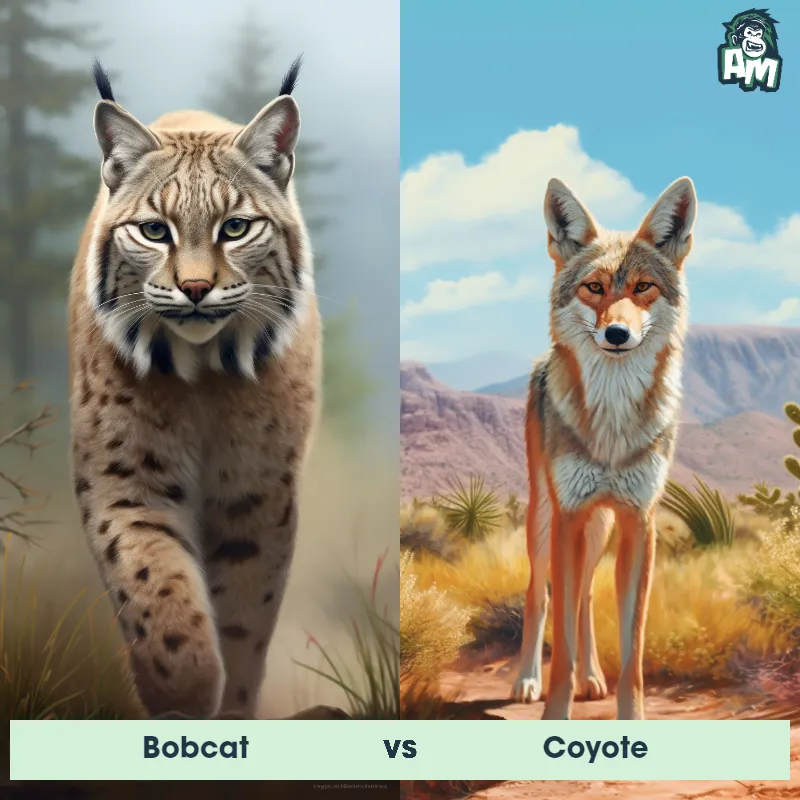Tiger vs PeacockSee Who Wins

Welcome, ladies and gentlemen, to what promises to be an electrifying showdown here at Animal Matchup! We've got an unusual matchup on our hands today, as we pit the might and power of a tiger against the elegance and flamboyance of a peacock. Both these animals carry unique traits that they'll employ in this three-round fight. It's going to be a clash of strength versus agility, and I simply can't wait to see who comes out on top!
Contender 1: Tiger
The Tiger is a large and powerful big cat, known for its distinct orange coat patterned with black stripes, which are unique to each individual, much like a human fingerprint. Tigers have a muscular build, a heavy head with strong jaws, and a tail that is usually about half the length of their body. The largest species of the cat family, adult male tigers can reach up to 10 feet in length and weigh up to 660 pounds. Tigers are native to various parts of Asia and are adept swimmers, unlike most members of the cat family.
Fun Fact: Tigers are apex predators and primarily consume larger mammals for food, including deer and wild boar; a hungry tiger can eat as much as 60 pounds in one night.
Contender 2: Peacock
Peacocks are large and majestic birds known for their colorful plumage and extravagant courtship displays. The male, called a peacock, is characterized by its long, iridescent tail feathers, which feature a mix of vibrant blues, greens, and browns with striking eye-shaped markings. Their bodies are covered in beautiful metallic plumage ranging from dark blues to rich greens. Peahens, the females, have a more subdued appearance with a brownish coloration and lack the dramatic long tail feathers. Peacocks are native to South Asia and are often found in forested areas, where their stunning beauty and distinct call make them a sight to behold.
Fun Fact: Did you know that the beautiful long tail feathers of a peacock, also known as its train, can reach up to six feet in length? These impressive feathers are used primarily during courtship displays, where the male raises and spreads them into an impressive fan to attract potential mates.
Matchup Stats
| Tiger | Peacock | |
|---|---|---|
| Size | Up to 10 feet in length (3.05 meters) | 3-4 feet (0.9-1.2 meters) |
| Weight | Up to 660 pounds (300 kilograms) | 8-13 pounds (3.6-5.9 kilograms) |
| Speed | 35-40mph (56-64km/h) | 10mph (16km/h) |
| Key Strength | Strong jaws and muscular build | Strong beak and talons for defense |
| Biggest Weakness | Limited endurance for long chases | Heavy and cumbersome tail feathers limit agility |
Current Votes
Tiger vs Peacock
See Who Wins
View More Matches
Looking For More?
Similar Matches
Scientific Stats
| Tiger | Peacock | |
|---|---|---|
| Scientific Name | Panthera tigris | Pavo cristatus |
| Family | Felidae | Phasianidae |
| Habitat | Forests, grasslands, and swamps | Forested areas, open grasslands, and cultivated areas. |
| Geography | Asia | South Asia, specifically India and Sri Lanka |
| Diet | Carnivorous, primarily deer and wild boar | Omnivorous: seeds, fruits, insects, reptiles, and small mammals. |
| Lifespan | 15 years - 26 years | 15 years - 20 years |
Key Differences between Tiger and Peacock
- Habitat: Tigers are primarily found in various terrestrial habitats such as grasslands, mangrove swamps, and dense forests across Asia, while peacocks are mostly associated with open grasslands, dry forests, and woodland areas of South Asia, including India and Sri Lanka.
- Body Shape: Tigers have a muscular and elongated body adapted for hunting and stalking, with strong forelimbs and flexible spines allowing them to leap and pounce on their prey, while peacocks have a more slender and upright body shape, with a small head and a long graceful neck that is often held upright.
- Tail: Tigers have a short, thick, and relatively plain tail with black rings and a white tip, which they use for balance and signaling, whereas peacocks have an extravagant, elongated tail consisting of highly adorned feathers with intricate eye-shaped patterns, which they display during courtship to attract mates.
- Color: Tigers have distinctive golden-orange fur with dark vertical stripes covering their entire body, providing excellent camouflage in the grasslands and forests they inhabit, whereas male peacocks have iridescent blue-green plumage on their neck and breast, with a long colorful tail called a train consisting of vibrant green, blue, and bronze feathers.
- Facial Features: Tigers possess a well-defined, broad head with a prominent snout, powerful jaws, and piercing yellow eyes framed by white markings that enhance their camouflage, while peacocks have a small, rounded head with a short beak and large round eyes that are typically a vibrant shade of blue or green.
- Size: Tigers are significantly larger than peacocks, with male tigers reaching lengths of up to 11 feet and weighing between 400 to 600 pounds, while adult peacocks average around 3.5 feet long and weigh between 8 to 13 pounds.
































